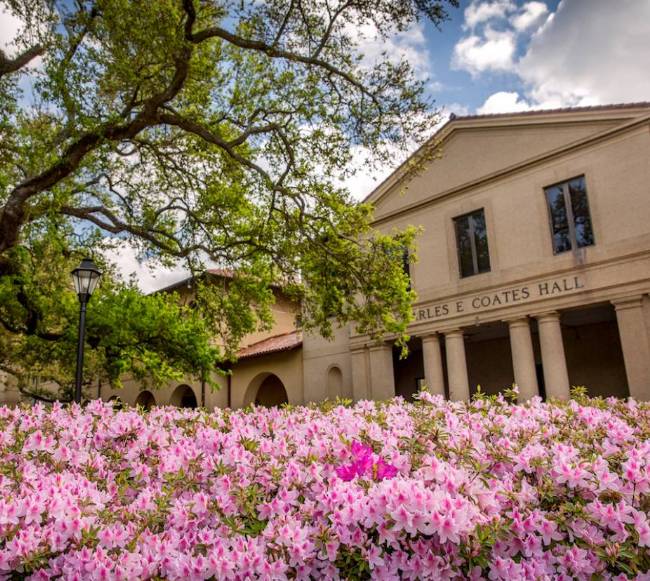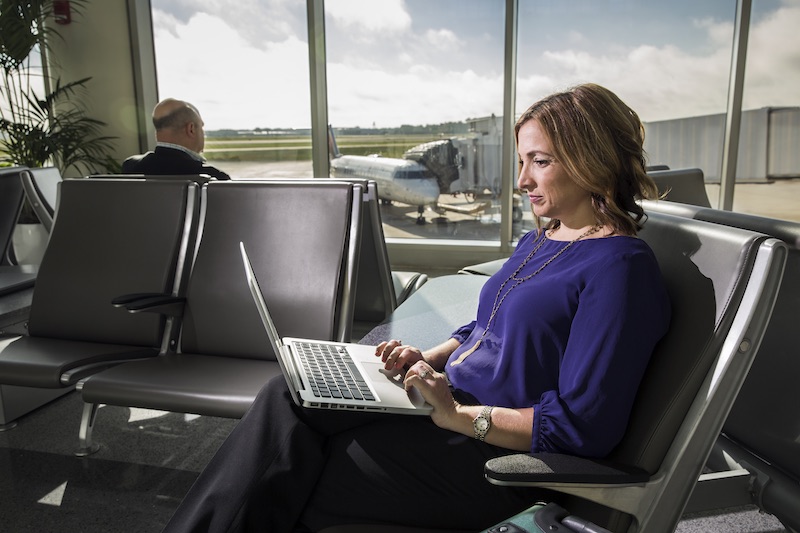Telling the Story While Surviving It: Students Reflect on Journalists’ Katrina Coverage and Sacrifice
September 03, 2025
In the aftermath of Hurricane Katrina in 2005, many New Orleans journalists put aside their own personal losses and trauma to report, inform, and tell others’ stories of hardship and resiliency.
Now, 20 years later, a group of LSU students is telling those journalists’ stories, revealing how they found extraordinary ways to bring the story to the world, even as their own lives were being ripped apart.
20 Years Later: Journalists Reflect on Covering Hurricane Katrina
Manship's Reilly Center for Media & Public Affairs Panel Discussion | Wednesday, Sept. 3
“Journalists are told to report the news, not make news. But their important stories are part of the Katrina story, too. I'm so glad we captured them for posterity,” said Lisa Page, professional-in-residence at LSU’s Manship School of Mass Communication.
Page oversaw the Digital Print Reporting Capstone project, which recognizes the 20th anniversary of Katrina in August.
Hurricane Katrina was one of the deadliest and most destructive storms in U.S. history. Making landfall on Aug. 29, 2005, it devastated the Gulf Coast, with New Orleans suffering catastrophic flooding after levee failures.
Nearly 1,400 people died, and hundreds of thousands were displaced. In the chaos, journalists played a vital role in documenting the devastation, holding officials accountable, and sharing survivors’ stories with the world.
Each student in the class interviewed a journalist who covered Hurricane Katrina and lived in the path of the storm, focusing on journalists who worked for The (New Orleans) Times-Picayune and were awarded the Pulitzer Prize for their coverage.

Digital Print Reporting Capstone project LSU participants
Dedicated to the Mission
The journalism students said compiling their report was an eye-opening and often emotional journey.
Student Isabella Albertini of Lima, Peru, interviewed reporter Michael Perlstein about his experience and was struck by his passion for journalism and reporting.
That proved true even in the face of a total collapse of social order in the city, where some reporters armed themselves for protection and were told there was no help coming should they run into trouble, according to Perlstein.
“When I asked him if he ever considered leaving the city, he replied that that’s not what a reporter would do. There was no option for him but to stay and do his job,” she said.
Learn More
The project was featured in August in the summer print issue of Gateway Journalism Review, which is housed at Southern Illinois University Carbondale, as well as on the review’s website.
Chloe Richmond of Chantilly, Virginia, said she was brought to tears by photographer Kathy Anderson’s story.
“Anderson and her husband, Doug Parker, a photo editor for the Picayune at the time, had to make the hard decision of sending their two daughters, 8 and 10, to live with Anderson's sister while they covered Katrina,” Richmond said.
“She struggled with whether or not she was making the right decision but held out knowing that the community needed her work. She spent five months away from her daughters.”
Reporter John Pope told student Zachary Tuminello that when it came time to leave New Orleans, he did so in the back of a delivery truck with several colleagues on their way to Baton Rouge.
“It sounds so insane and theatrical, I would've believed it was from a movie if there wasn't enough evidence to prove it really happened,” said Tuminello, a Baton Rouge, Louisiana, native. “Pope's description of the barren highway with people walking kind of aimlessly really punched the apocalyptic feeling of it all in.”
The Power & Value of Journalism
Student Ella Armstrong of Zachary, Louisiana, said her participation in the project taught her that journalists have the skillset to help people and make a difference, but it can come at a personal cost.
That was the case for her interview subject, photographer John McCusker.
“His story resonated with me because of how he was affected in his personal life,” she said. “It showed me how difficult the storm was on people, not only physically, but mentally. Something that stuck out to me about McCusker was his resilience in bouncing back time and time again from the hurt that the storm brought upon him.”
Students heard multiple examples highlighting the dedication of the journalists to get the story. Even those who were sportswriters or music writers or in other roles during regular times became weather and crisis reporters when called upon to do so.
“No one had previous experience covering anything like it, but they had to jump in and do it, do their jobs to the best of their ability, and even go beyond their typical jobs,” Albertini said. “Being a journalist means being ready for anything and being willing to go the extra mile to get the news.”
A Learning Experience
Albertini took away from the experience an understanding that journalism becomes ingrained in people who practice it.
“Journalism is more than a job, it’s a profession,” she said. “It’s who you are and who you become when you sign up for the job. You’re always on the lookout; you never know where the next big story will be, so you just have to show up. But you do it because you love it.”
“I know the value of words, and being able to talk with seasoned storytellers has opened my eyes to the possibilities that I have in the future to really help people.”
— Ella Armstrong
Fellow participants Armstrong and Richmond felt it, too.
“I have a couple of big takeaways from this project, one being my ability to make a change in the world just by snapping a picture or writing a story. I know the value of words, and being able to talk with seasoned storytellers has opened my eyes to the possibilities that I have in the future to really help people,” Armstrong said.
Richmond had a similar take. “This project also showed me how much of an impact someone else's work can have on a community, which is something I hope to achieve one day.”
And while Tuminello has a different goal, writing books, he learned from the interview subjects that it’s the little details and the human touch that turn a historical event into a story that resonates with and moves readers.
“If it solidified any journalistic desire, it would be to tell real stories,” he said.
Team Members
Isabella Albertini
Ella Armstrong
Morgan Auzine
Isabella Avila
Kate Beske
Mariah Cannon
Colin Falcon
Jaden Geary
Tyler Harden
Carly Itzel
Charles James
Chandler Johnson
Audrey Livigni
Noah Martin
Chloe Richmond
Martin Sullivan
Zachary Tuminello
Next Steps
Let LSU put you on a path to success! With 330+ undergraduate programs, 70 master's programs, and over 50 doctoral programs, we have a degree for you.


